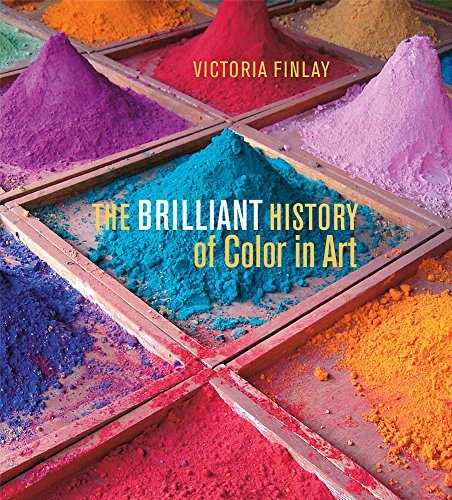The Brilliant History of Color in Art
Finlay’s descriptive history of paint and its derivatives from nature perfectly couples with the reproductions of exemplifying artwork.
The Brilliant History of Color in Art, by Victoria Finlay, covers the development of art and color through the ages. Packed with fascinating detail and beautiful illustrations, this book combines colorful imagery with smartly-written text.
Twenty-first century research of ice-age cave drawings reveals that prehistoric artists used nature’s colors for paint and made specific tools to achieve desired effects. Finlay’s overview continues to the white-marble sculptures of ancient Greece, thought to have been unpainted until traces of color were discovered by archaeologists in the nineteenth century. More recently, the ability to store oil paints in tubes freed artists to go outdoors to paint. They observed that sunlight changes the color of objects as the day progresses, inspiring Vincent van Gogh to paint his famous haystack series. Colored photography evolved into the ultimate modernity of computer software used by David Hockney to create art using “pixels as paints.”
Finlay writes with wry humor, making the technicalities of paint composition understandable. For example, she asks why red ocher, “iron earth,” is a plentiful and inexpensive pigment, explaining that the answer “can be found in the stars, and in nuclear fusion. So hold on tight: this is a pretty atomic explanation.”
Sidebars and text related to illustrations add further detail to the narrative. The section on yellow ocher features a sidebar highlighted by a pale yellow background. Within it, bulleted points include this fact: “Insect blood is pale yellow. If you squash a mosquito, the red blood is probably your own.”
Explanations of word origins offer yet another level of interest. For instance, Finlay explains that camera means “room” in Latin, and the brown sepia used in early photographs is “made from the ink of cuttlefish (sepia in Italian).” Similarly, pixel combines two English words: picture and element.
Most of the publication’s 166 color illustrations represent works from the J. Paul Getty Museum collections. They exemplify the power of pictures to convey meaning, and Finlay’s informative text blends seamlessly with these high-quality reproductions. The matte-finished pages show them to good advantage.
Art students and teachers, history buffs, people interested in word origins, and those wanting to learn more about art will find much to admire in The Brilliant History of Color in Art.
Reviewed by
Margaret Cullison
Disclosure: This article is not an endorsement, but a review. The publisher of this book provided free copies of the book to have their book reviewed by a professional reviewer. No fee was paid by the publisher for this review. Foreword Reviews only recommends books that we love. Foreword Magazine, Inc. is disclosing this in accordance with the Federal Trade Commission’s 16 CFR, Part 255.

